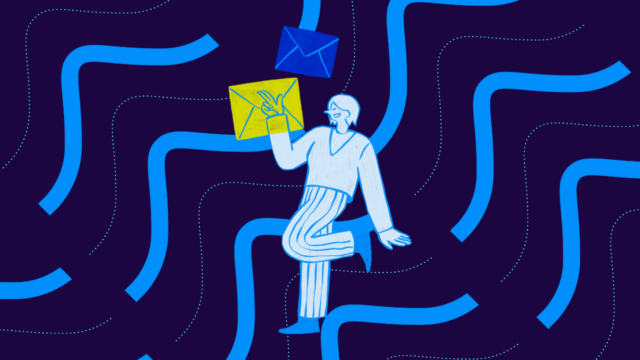Join us today with another interview in our blog series: Authenticated Answers! We sat down with Marc Bradshaw, a senior backend developer at Fastmail.
At Valimail, we take our work seriously but try not to take ourselves too seriously. This value inspires us to get to the heart of what makes people unique and how it affects their careers to provide valuable advice, inspiration, and insights to people working with email daily.
In this lighthearted interview series, we connect with experts from the email, IT, security, ISP, and authentication spaces to learn more about them and their experiences.
About Marc Bradshaw
Marc focuses on mail flow, email authentication, and anti-abuse. He’s worked at Fastmail for almost ten years and is currently a senior backend developer. Marc has been representing Fastmail at M3AAWG for the past six years and is also a member of the AuthIndicators working group developing BIMI.
He is also active in Open Source development and is the Author or Maintainer of various Perl libraries implementing things like BIMI, DKIM, ARC, DMARC, Authentication Results Headers, etc. Marc is the author of Authentication Milter, which is used in the email authentication stack at Fastmail.
Currently, Marc lives in Melbourne, Australia, with his family, and when not working on email likes to ride bikes.
How do you stay motivated when learning something challenging or frustrating?
Linking the challenging new thing with something I am already passionate about helps me. For example, I recently improved my skills in Python and electronics by taking on some home automation projects.
Taking the new knowledge and applying it to something I am already working on helps to keep learning fun and relevant, and having a real-world project to work on gives the new knowledge a context beyond that which simple learning tasks typically have.
What was the last wall you crashed through?
Quite literally, we made some renovations to our house recently, and I crashed through the wall of an old shed while knocking it down. It was a fun thing to do, and I was glad to complete the task without sustaining any major injuries.
What’s your favorite way to show gratitude?
I try to call out the great work of colleagues during meetings to make sure that any hidden work does not go unacknowledged.
In general, a simple thank you and showing a genuine interest in others goes a long way, but it’s even better to show gratitude to someone who helps out by doing the same for them, actions speak louder than words.
What’s the funniest mistake you’ve made, and how’d you handle it?
Way back in my first job working in tech support at a university, I acquired an old Sun SparcStation to use for personal projects. The hard drive on this box was not quite large enough to install the latest version of SunOS and still have space for personal files, so I decided I would move some files to a secondary drive and “symlink” them so that the OS could still find them. One of the directories I moved was a shared libs directory (/lib).
The move command did as instructed and moved all of these files to the new location; however, when I came to put in the link, that command failed because “it couldn’t find the shared libraries.” There was no way to either add the link or move the files back to where they were.
The “oh no” moment of realization followed, and after laughing about it, I started a re-install and went off to see some friends laugh about my mistake even more.
What’s the smallest hill you are willing to die on?
There are many large hills I will die on, kindness, equal rights for all, acknowledging privilege, and fighting bias.
Learning to let the small hills go and avoid unnecessary drama is a life skill, but with that said, pineapple does belong on pizza, don’t @ me.
What’s your favorite thing about BIMI?
My favourite thing about BIMI is that it encourages good behaviour, rewarding the effort that brands have made to properly authenticate their email by showing their logo alongside the email.
Without proper BIMI authentication, email is something that the IT department may want, either to be compliant with the latest best practices or in response to phishing. BIMI increases the desirability of implementing authentication by offering an incentive to the marketing department. Our stats have shown this works, and the number of domains implementing both authentication and BIMI continues to increase.
How would you explain DMARC to your grandparents, friends, or relatives?
I am firmly of the opinion that DMARC is not an authentication mechanism; it’s a policy layer that is applied to the existing authentication mechanisms, SPF and DKIM.
If I were to explain this to non-technical relatives, I would say that SPF and DKIM are like your ID, a way to prove you are who you say you are. With that in mind, I would say that DMARC is the instructions that have been given to the bouncer at the club on whether or not they should admit you based on whether you have a valid ID or not.
In the past, you didn’t need to show any ID, but we are moving towards a future where you will need a valid ID, and this is No Auth No Entry.



